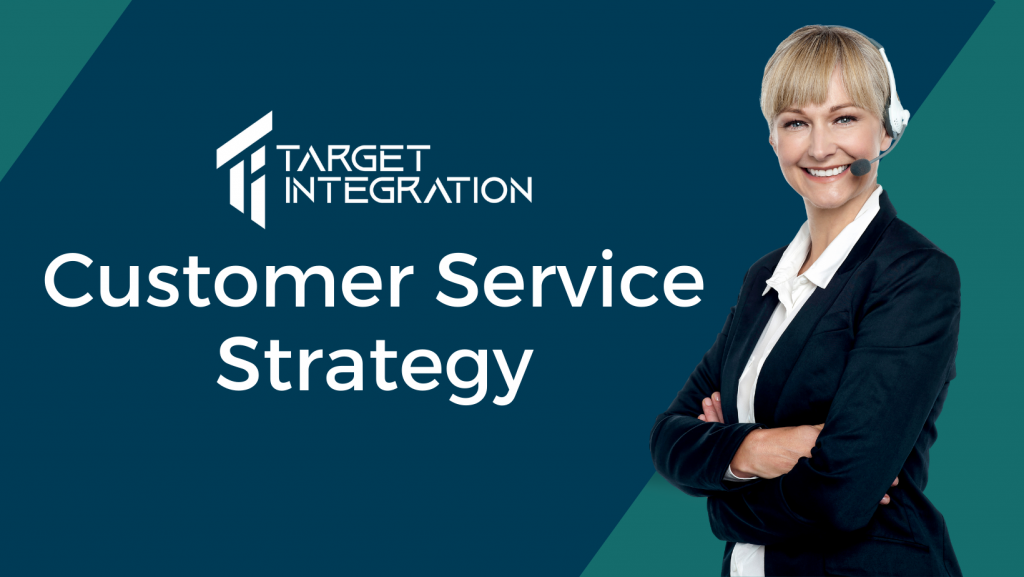A customer experience plan, at its heart, is a structure you can rely on to provide excellent service when the need for quantity does not appear to be abating.
But first, let us define what a customer experience strategy is.

What is the definition of a customer experience strategy?
Customer experience (CX) refers to the total of all contacts a customer has with a business, both pre and post-sale, customer experience strategy specifies the practical strategies in place to create a pleasant, meaningful experience across all of those encounters.
An effective customer experience plan should include numerous key variables, including, but not limited to:
- Competitive insight
- Consumer research
- Marketplace data
- Mission & vision
When developing your customer experience plan, be sure you include all departments, not just those who interact with customers. You’ll find it simpler to unite the organization behind the intended aim of improving the customer experience and connection if you include feedback and insight across the firm.
On a practical level, you may develop your customer experience strategy by creating a matrix of the present status of your client journey. To begin, use the template below, and then go with the remaining post to finish it.
Elements of Customer Experience
1. Reviewing your current customer service strategy
The first stage in developing a customer service plan is to assess your company’s present customer service strategy. The idea is to figure out what’s going well for your company and where you can improve.
If you’re not sure where to begin, look for important success indicators in your company’s help desk or call-centre statistics, such as Net Promoter Score, customer happiness, and customer turnover rate. If your score falls short of expectations, you’ll have a starting point for further investigation.
2. Creating a customer journey map
A customer journey map is another crucial component of your customer experience strategy. A customer journey map depicts all of a client’s interactions with your company, including any pain spots encountered along the road. This tool not only identifies friction in your client experience but also shows you how to eliminate it and replace it with happiness.
3. Training your customer service staff
Once you’ve determined when you need to improve, the next step is to share the knowledge with your team and teach them about any new protocol that will be implemented in the future. It’s critical to discuss your results with your team so they understand why you’re proposing these adjustments.
It’s never easy to learn that your team is underperforming, especially when other teams in your department are exceeding expectations but being open about it helps lessen resistance to your new regulations and motivate representatives to improve their performance in the future.
4. Determining your customers’ expectations
Some consumer expectations are basic, such as being trustworthy and maintaining a cheerful attitude. Customers will anticipate these things from your company every time they contact you.
Most clients, on the other hand, have unique requirements that alter on a case-by-case basis. It may be necessary to respond quickly in some circumstances, while quality and clarity are more vital in others. It all depends on the customer’s mood when they contact your company, as well as your team’s ability to recognize and respond to their demands.
5. Solving for the customer
A strong customer service approach focuses on resolving customer problems, whether they are foreseen or unanticipated. When we think about customer service, we usually picture call– centres and IT staff answering phones 24 hours a day, 7 days a week.
Many organizations, on the other hand, have teams dedicated to predicting possible problems and preventing them from affecting customers.
These are customer success teams, and they’re an important part of delivering a great customer experience. Not only do they plan for difficulties down the road, but they also check in with consumers periodically, to ensure everything is going well post-purchase.
This form of proactive customer service decreases churn and builds the bond between your staff and your customers.
6. Providing self-service solutions
There’s no reason why organizations shouldn’t provide self-help support choices to their consumers now that omnichannel services are more accessible than ever. Rather than being forced to call your company every time they need assistance, consumers should be able to answer inquiries and solve problems on their own utilizing the same documentation that your support staff has access to.
Furthermore, self-service tools like knowledge bases and chatbots not only help clients find solutions faster but also reduce the case volume for your staff. As more consumers use your self-service options, fewer customers will contact your support personnel for common issues. This frees up time for your staff to focus on the more difficult challenges that require more skill to resolve.
7. Routinely collecting feedback
You must ask and, more importantly, listen to your consumers if you want to genuinely grasp what they want from your company. If you ask at the correct moment, your consumers are more likely to submit a review, but you must take this input seriously and incorporate it into your plan.
You should also collect feedback from your clients regularly. As previously said, client demands change over time, therefore you’ll need up-to-date information on how your consumers feel about your company. Because things change so frequently, adding an automatic method to collect input after each client interaction may be beneficial.
8. Tracking your team’s performance
You must track the performance of your customer service strategy over time if you want it to be consistently effective. Customers are constantly seeking the best value and the most dependable service, and they’re likely to switch to a rival if they believe they can receive a better deal or more reliable service.
If you get complacent with your plan, your industry’s competitors will most certainly catch up and steal your clients while you are distracted. Alternatively, a new trend may emerge in your business, and you may lose out on the opportunity to capitalize on it because you failed to collect current client feedback.
The most successful firms are those who monitor their employees’ performance regularly and are continually searching for new ways to improve the client experience. These businesses hold their personnel to a high level and expect them to have positive interactions with every customer they come across.
Let’s look at some best practices to keep in mind for your company to assist you to build a thorough, integrated customer experience plan.
Best practices for good customer service
1. Reach your target audience
The way you communicate with your consumers has a major impact on how they perceive you. You’re missing out on a chance to engage consumers when they’re most interested or in need of assistance if you’re not meeting them where they are.
To succeed in this area of customer experience, your company must first figure out which channels your consumers use the most, so you can tailor your strategy and offer them there.
The next step is to become comfortable with the channel, whether it’s social media, email, live chat, or anything else. Consider this: How are our consumers currently communicating on this channel? And, more importantly, how can we leverage this data to make our outreach feel more authentic?
If done correctly, reachability may become a beneficial competitive advantage. It’s critical that your company understands your consumers’ preferred channels and provides consistent, reliable service through them.
2. Offer convenient customer service
The desire for improved service develops as customers become more empowered to find answers and information on their own via the internet and social media. Businesses must focus on end-to-end online help to maintain solid client relations.
Consider this: Do customers have to wait until Monday to contact you if they have an issue at the weekend? Or do you offer a live chat function available 24 hours a day, 7 days a week to satisfy their Saturday needs?
A best practice as easy as having a polished, up-to-date knowledge base on your website gives clients the ability to help themselves without having to contact your staff.
3. Be consistent in your customer service activities
Customers are increasingly concerned with establishing trust with the businesses with whom they do business. Every staff that has an impact on the customer experience must be consistent in their procedures, rules, and behaviours to build confidence.
To assist in establishing this culture of trust with your customers, double-check that your rules are up-to-date, reasonable, and applied consistently across all circumstances and buyer profiles. You don’t want to find yourself in a situation where a return or exchange causes a split with your customers, making future purchases more difficult.
4. Customer input helps to improve products and services.
No matter how much time and effort you put into optimizing the back end of your customer experience, keep in mind that they’ve paid for a product or service from you, and they expect it to be valued and high-quality. To enhance your goods and services, use consumer feedback through an NPS survey, focus groups, or one-on-one client encounters. Solving the problem at its root with a product or service you offer can improve the overall customer experience.
5. Create in-person & digital personalization
Businesses should collect information throughout the client relationship to make relevant ideas or more educated help in the future, to provide the greatest possible customer experience.
Personalization may be seen as a show of appreciation for the customer’s loyalty and business (when done correctly). It also shows that your company is committed to improving the connection by providing better service, recommendations, and assistance, among other things.
While there are various ways to gather and use customer data, a common inbox for your customer success or service department is a good place to start. You’ll establish the groundwork for greater contextual communication and outreach by building a clear, universal location where anyone can look up previous customer discussions or requests.
Customer Experience Planning Is a Long-Term Investment
Rome wasn’t built in a day, and your customer experience plan shouldn’t be either.
What is our recommendation? Work on defining and simplifying your customer experience design, but keep in mind that things will change as your company and customer base expand.
You’ll find it simpler to make educated judgments about your entire customer experience strategy as you grasp what it means to connect with consumers on their terms and gather data along the way. And, with that in mind, implementing a solid CRM system into your company can only promote your growth, which is where Target Integration comes in. Get in touch with us!



